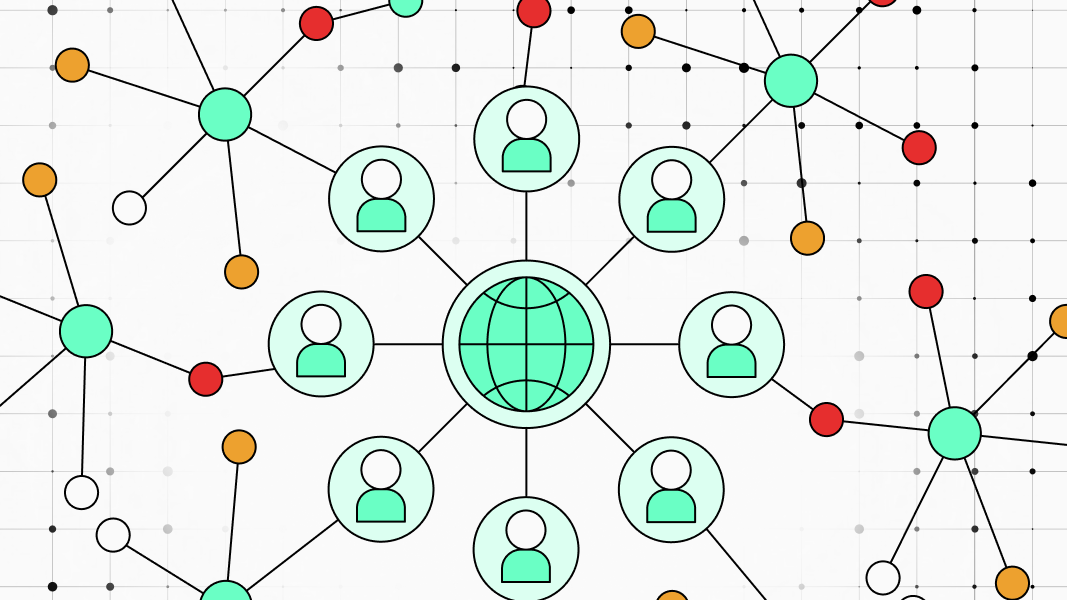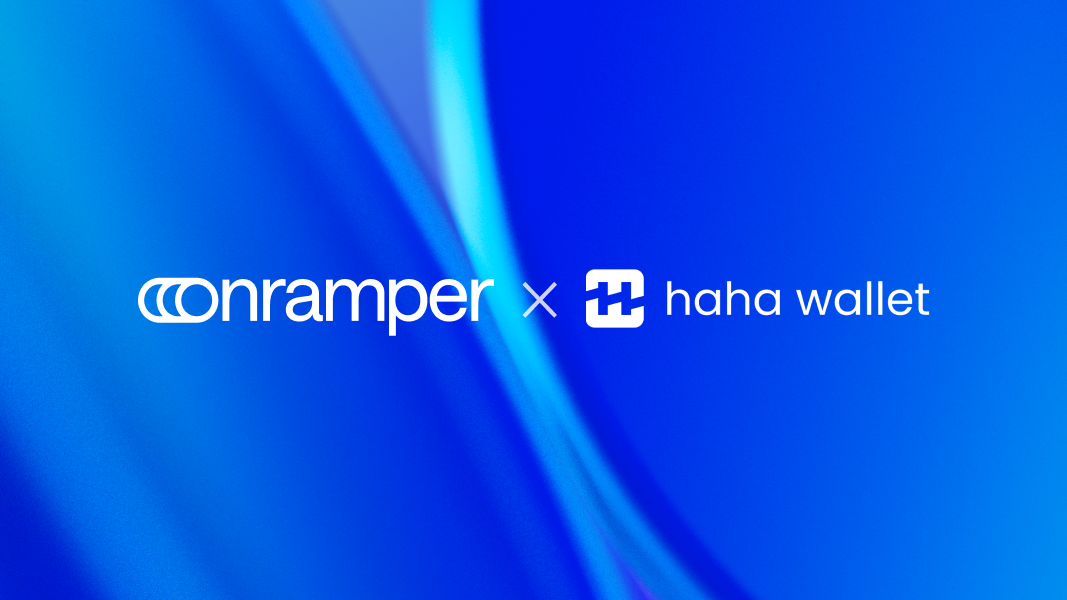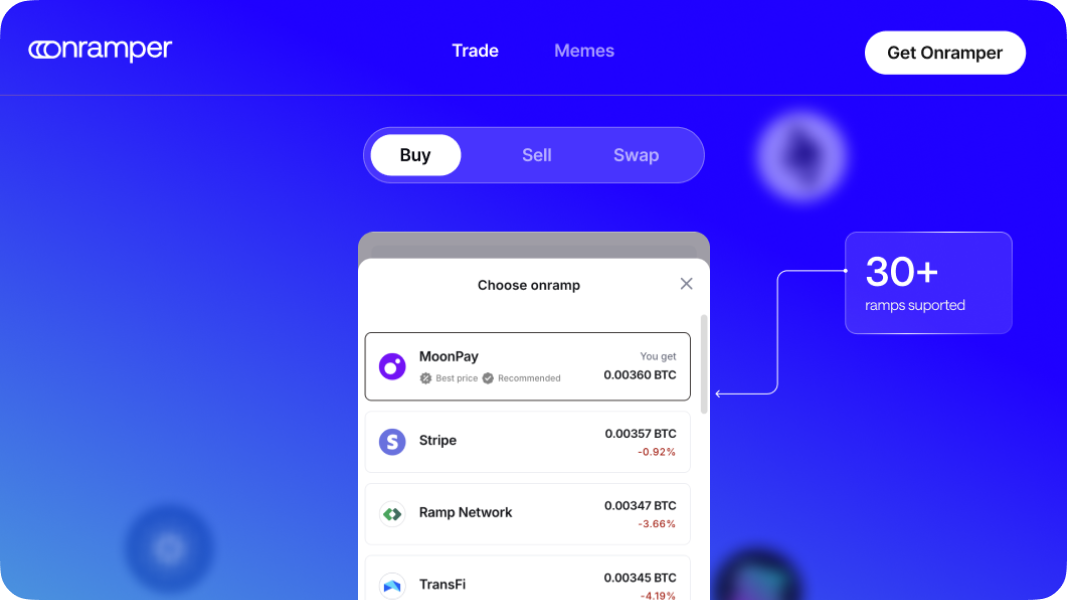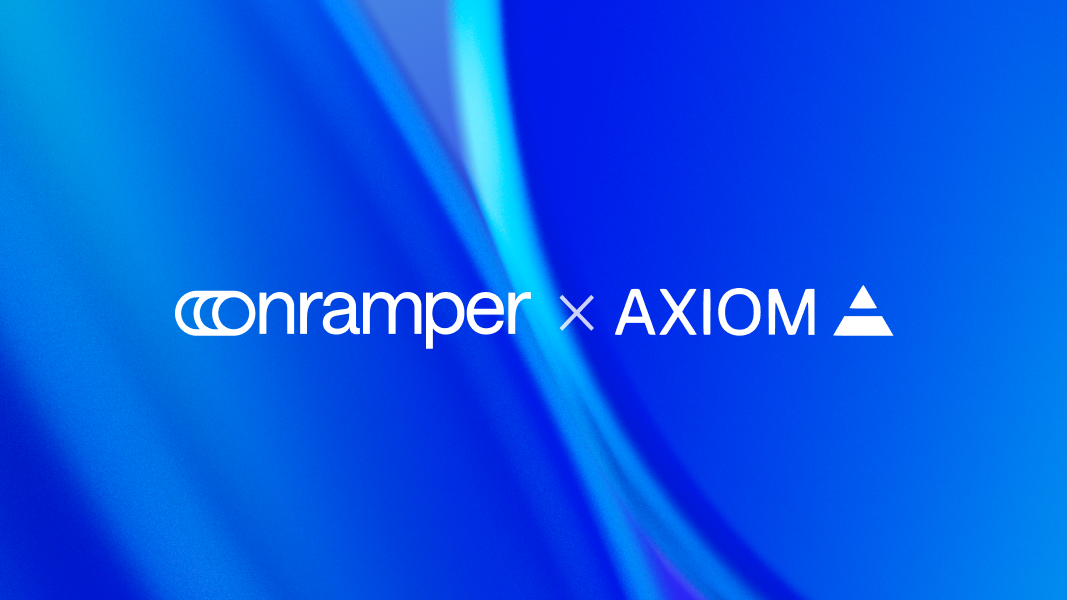Blog
How Web3 businesses can onboard more users with integrated onramps
The next iteration of the Internet promises an exciting future for individuals the world over. Here's how you can maximize your reach.

The next iteration of the Internet promises an exciting future for individuals the world over.
Powered by decentralized technologies, Web3 is set to change everything — from the payment methods we use online to the ways we think about ownership of art, data and even real-world assets.
With such a shift, however, comes a learning curve. The mainstream hails from the Web 2.0 era, where things work differently — and concepts such as self-sovereignty and private keys are totally foreign.
To onboard the masses, overcoming the hurdles associated with these new mental models is critical. We believe that starts with onramping.
Why are integrated fiat-to-crypto onramps so important?
In a perfect world, new users land on your Web3 site and can immediately start interacting with it. That may be the case for those already in crypto, but what about those that aren’t?
For a user new to crypto, there’s the lengthy ‘getting started’ phase. Web3 wallets make it relatively easy to manage funds and interact with platforms, but obtaining crypto can be an overwhelming endeavor. The often-recommended route — registering for a centralized exchange — is a lengthy process which requires users to:
- Submit KYC documentation
- Wait for verification
- Figure out how to buy and then withdraw crypto
Once this is all done, only then can they start interacting with your platform.
An integrated onramp can make things much easier. For starters, it lives on your site — and it’s reminiscent of the checkout flows that Web 2.0 users are already familiar with.

It’s also a lot more intuitive: users select their preferred payment method and their desired input/output currencies, before being guided through the flow to receive their crypto. Before they know it, they’re ready to interact with your platform — and they haven’t been sent to an off-site exchange.
Web3: more than crypto
Arguably, Web3 has a much wider appeal than cryptocurrency by itself.
The likes of Bitcoin and ether appeal primarily to those interested in the financial and technological aspects of digital money. But the all-encompassing Web3 umbrella spans all kinds of industries — and it even represents something of a cultural shift, as decentralized technologies will fundamentally alter the way we interact in the digital world.
The challenges of this shift are, granted, complex. To frictionlessly transition users from Web 2.0 to Web3, we need to keep their existing mental models in mind by designing experiences that mirror the processes of the current Internet.
There are many areas where UI/UX can be improved. However, we’re most interested in the fiat-to-crypto flow — and making it easy for users to onboard into Web3. For us, this means delivering an experience that wouldn’t be out of place on an ecommerce website: one that’s fast, one that’s intuitive, and one that moves the user from Point A to Point B as seamlessly as possible.
Onboard users effortlessly with Onramper
With just eight lines of code, you can immediately integrate over 15 of the industry’s best onramps into your platform.
Onramper’s widget automatically pairs your users with the onramp most likely to guarantee transaction success, time and again, thanks to our proprietary dynamic transaction routing engines.
In case you missed it, our recent report, The three best-kept onramping secrets, revealed that single-onramp solutions lead to alarmingly high failure rates. With a fiat onramp aggregator, however, you can remain confident that your users are matched with the best option for them — without any added effort.
120+ payment methods in 180+ countries. Never worry about onboarding users again with Onramper’s set-and-forget widget. Get in touch to find out more.
Other articles

HaHa Wallet Partners with Onramper to Expand Access to the Monad Ecosystem
Partnership follows Monad Mainnet launch to unlock global onboarding
AMSTERDAM, Dec. 17, 2025 — Onramper, the world’s leading fiat-to-crypto onramp aggregator, today announced a strategic partnership with HaHa Wallet, next-generation, Monad-native crypto wallet, to broaden global accessibility for users engaging with Monad ecosystem.
Through the integration, HaHa Wallet users can now buy crypto using over 130 local payment methods across 190+ countries, benefiting from competitive rates and optimized fees. Following the launch of Monad’s public Mainnet in November 2025, the partnership makes it easier for users worldwide to enter Monad and begin trading, bridging, and exploring dApps.
HaHa Wallet has quickly become a leading gateway into Monad, offering a fast, intuitive, and reward-driven user experience. With Onramper’s global payments coverage and smart routing engine, users can move from fiat to crypto in just a few clicks and start interacting onchain.
“Realizing Monad’s full potential depends on frictionless onboarding,” said Thijs Maas, CEO of Onramper. “Our partnership with HaHa Wallet brings trusted, localized payment access directly into the Monad ecosystem. Together, we’re making it easier than ever for people everywhere to get started on Monad.”
Monad’s unique architecture enables parallel transaction execution, delivering faster speeds, quicker finality, and lower fees without sacrificing decentralization. Combined with Onramper’s global payment infrastructure, HaHa Wallet provides users with a streamlined entry point into Monad’s high-performance blockchain environment.
“Our focus is building the simplest possible entry point into the Monad Ecosystem,” said Mu Li, founder of HaHa Wallet. “Integrating Onramper allows us to offer trusted local payment methods, helping users get onchain quickly and confidently, no matter where they are in the world.”
Onramper continues to lead the onramp aggregation space, connecting more than 30 global fiat gateways and supporting over 2,000 digital assets, driving greater accessibility and inclusivity across Web3.
To learn more, please visit onramper.com and haha.me
About Onramper
Onramper is the leading fiat-to-crypto payments aggregator, providing a turnkey API-based solution for dynamically routing fiat-to-crypto onramp flows based on algorithms optimizing for conversion, fees and payment methods. Onramper’s platform allows users of clients to buy 2000+ digital assets, in over 190 countries with over 130 payment methods in 120 currencies, with advanced routing options and unified analytics. The company is based in the Netherlands. To learn more about Onramper, visit www.onramper.com.
About HaHa Wallet
HaHa Wallet is the Monad native, high performance smart wallet built to maximise how users earn and participate on chain. Purpose built for Monad’s low latency, parallel execution environment, HaHa delivers lightning fast swaps, deep native integrations with Monad dApps and ecosystem campaigns, and seamless access to multiple EVM chains through a single non custodial experience. Users earn Karma for meaningful on chain activity, unlocking rewards, ecosystem access, and future HaHa token utility, positioning HaHa Wallet as the primary consumer gateway to Monad and a rewards driven hub for Web3 participation.
For media enquiries, contact:

Introducing our new crypto trading portal: the easiest way to buy, sell and swap
Buying crypto should be simple. Selling and swapping should feel just as easy. That’s why we’re leveling up the Onramper experience to make this a reality.
Meet our new crypto portal, the world’s simplest all-in-one trading platform. It brings buying, selling and swapping together in one place with the best available fees and full global coverage.
One place for everything
It’s easy for trading flows to feel scattered, with buying, swapping and selling all living in different places. We set out to fix that..
Our portal brings everything together so the entire journey stays clear and straightforward from start to finish. You can now:
- Buy crypto with 170+ payment methods
- Sell back to fiat
- Swap 100K+ assets across 50+ networks, with 11+ liquidity providers
All from one clean, intuitive interface.

Always the best fees, automatically
Crypto pricing moves fast, with fees constantly shifting based on payment method, geography, KYC requirements and liquidity. Our smart routing engine tracks all of it in real time and selects the best provider automatically.
We do the work, and you get the best fees with the highest chance of transaction success.
Any payment method. Any user.
A global product requires global payment coverage. The new portal supports 175+ payment methods including cards, Apple Pay, Google Pay, bank transfers, regional options and alternative methods found in high-growth markets.
Since payment preferences vary by region, the interface automatically highlights the options that perform best in your area. This keeps the experience fast, familiar and easy for any user, anywhere.

Buy any memecoin on Solana with MoonGate
The rise of memecoins has changed what’s expected from a trading experience. People want speed, simplicity and access to the long tail of new tokens.
By integrating MoonGate directly into the portal, we deliver exactly that. You can:
- Sign in with Google or Apple to generate a wallet instantly
- Discover trending Solana tokens
- Buy or swap into any memecoin in seconds
No separate setup and no manual wallet creation. Just instant access.

This is just the beginning
This portal isn’t an add-on. It’s a dedicated page built around a single widget that supports every trade type in one unified experience. And it’s only the first version.
We’ll continue adding new features that streamline the entire trading journey. From smarter token discovery to personalized payment suggestions, our goal is to create the smoothest crypto trading experience possible.
Try the full experience here: https://onramper.webflow.io/buy

Axiom Partners with Onramper to Power Seamless DeFi Trading
With Onramper, Axiom users around the world can top up BNB and SOL with 130+ payment methods including Apple Pay and Venmo.
AMSTERDAM, December 4, 2025 – Onramper, the world’s leading fiat-to-crypto onramp aggregator, announced a partnership with Axiom, the Y Combinator-backed Solana-based trading platform, to deliver one of the fastest and most seamless trading experiences in DeFi. Through this integration, Axiom users worldwide can instantly top up BNB and SOL using more than 130 payment methods, including Apple Pay, Google Pay, Venmo, debit and credit cards, and localized options across 190 countries.
Axiom has quickly become one of the top trading platforms in the Solana ecosystem, offering access to memecoins, perpetuals, and yield strategies. In October 2025, the platform made history as the fastest crypto company to reach $300 million in revenue. Through its collaboration with Onramper, Axiom is offering users a simple, fast way to onboard and begin trading on Solana.
“Our job is to simplify the way users move from fiat into crypto,” said Thijs Maas, CEO of Onramper. “By offering a wide range of trusted, localized payment options, we ensure that users can onboard quickly and compliantly. We’re thrilled to support Axiom as they scale the next generation of DeFi on Solana.”
Onramper’s network supports more than 130 payment methods and enables crypto purchases across 190+ countries. Its routing engine recommends the best available conversion in real-time, maximizing the chances of a successful transaction and helping users receive the most crypto for their fiat.
“We’re delivering an onchain trading experience that is fast, global, and intuitive,” said Henry Zhang, Co-Founder and CEO of Axiom. “Integrating Onramper strengthens that experience by giving users a reliable way to move from fiat to crypto and access onchain liquidity.”
Onramper continues to lead the onramp aggregation space, connecting more than 30 global fiat gateways and supporting over 2,000 digital assets, driving greater accessibility and inclusivity across Web3.
To learn more, please visit onramper.com and axiom.trade.
About Onramper
Onramper is the leading fiat-to-crypto payments aggregator, providing a turnkey API-based solution for dynamically routing fiat-to-crypto onramp flows based on algorithms optimizing for conversion, fees and payment methods. Onramper’s platform allows users of clients to buy 2000+ digital assets, in over 190 countries with over 130 payment methods in 120 currencies, with advanced routing options and unified analytics. The company is based in the Netherlands. To learn more about Onramper, visit www.onramper.com.
About Axiom
Axiom is a trading platform designed to be the only application you need to trade onchain. It offers a suite of integrations that allow users to trade the hottest assets, all in one place.
For media enquiries, contact:



















